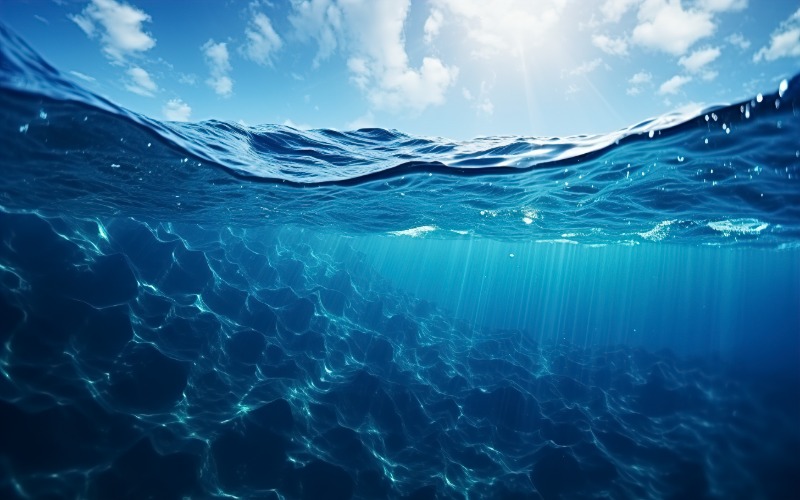A wave of innovative oceanography technology has unlocked the mysteries of the deep blue sea, allowing scientists to examine the most pressing human and climate-induced impacts on marine ecosystems. These observations and insights also help them better understand the effects of pollution, changes in currents and marine wildlife behaviors, and where hidden resources lie untapped. Here are six incredible developments in how we study the ocean.
1. Photorealistic 3D Digital Twins
In April 2024, Australia’s Great Barrier Reef (GBR) suffered unprecedented bleaching across 73% of the surveyed park — an event scientists say is a direct result of climate change. Yet, the GBR maintains economic, cultural, and environmental value, including serving as a habitat for endangered marine species.
Researchers are now using artificial intelligence (AI) to create photorealistic 3D twins of reef sections in real-time. Photogrammetry produces the renderings, which undergo processing in a supercomputer. Scientists can then use AI modeling to determine how climate change affects reef structure, enabling better decision-making in restoration approaches.
2. Underwater Acoustic Monitoring
Marine noise pollution has increased dramatically due to shipping, military sonar, energy exploration, and other human activities. The noise has detrimental effects on species, including hearing loss, acute stress, migrations, and disruptions in communicating, breeding, feeding, and nursing.
Acoustic monitoring is a critical innovation in oceanography technology helping scientists learn more about marine populations. For instance, the Ocean Observatories Initiative uses hydrophones to study fin whale calls. The most prevalent call lasts one second at 20 hertz, which informs researchers about their migration patterns and communication.
Oceanographers may use acoustic monitoring equipment attached to a submarine’s hull at depths over 180 meters or about 590 feet. Acoustic equipment allows researchers to better study marine life.
3. Animal Telemetry
Animal telemetry involves tagging marine wildlife with electronic tracking sensors to shed light on species’ interactions with the ocean. This provides insights into how climate change and pollution affect sharks, turtles, whales, seals, and other animals.
The data collected directly informs government agencies and conservation scientists about the changing marine environments and species behaviors, prompting significant regulatory changes. These policy frameworks could prevent overfishing or issue better protections in areas of high concern.
4. AI-Driven Autonomous Underwater Robots
The ocean floor is dark and expansive. In fact, the Mariana Trench in the Pacific is about 35,875 feet deep, making it the deepest part of the sea. At these depths, 91% of marine species remain undiscovered yet give valuable understanding into the Earth’s geological transformations, evolution, complex food chains, and how life adapts to extreme conditions.
The latest autonomous underwater robots are now equipped with AI technology and can withstand rough environments, such as extreme temperatures, high pressure, and toxic underwater gases. For example, scientists recently deployed an AI-driven underwater robot off the coast of Santorini. The equipment investigated the submerged Kolumbo volcano, sampling marine organisms otherwise too dangerous for divers to reach.
5. Surface Buoys
Surface buoys with GPS tags are not a new oceanography technology. They have long been utilized to study ocean currents and sea-level rise. The more precise the readings, the greater chance scientists have of predicting the weather, determining how far oil spills and pollution will spread, and monitoring the ocean’s energy transfer.
To improve accuracy, researchers from the Massachusetts Institute of Technology have integrated machine learning. The newest models are relatively easy to deploy and deliver more concise predictions and identification of the ocean currents.
Oceanographers can use the buoys’ data to monitor carbon, plastics, oil, and biomass, such as Sargassum seaweed. Currently, the Caribbean, Gulf of Mexico, and Florida coastlines are being choked by Sargassum blooms, which could have dire effects on marine ecosystems, wildlife, and public health.
The National Oceanic and Atmospheric Administration also monitors several buoys across the ocean. One buoy, Peggy, has measured sea temperatures, salt content, nutrients, and currents in the Bering Sea since 1995. Scientists use the data to assess the loss of sea ice.
Another 50 buoys are deployed worldwide to study ocean acidification in global coral reefs, coastal ecosystems, and open waters. These buoys provide details about carbon dioxide concentrations in these regions.
6. Satellite Oceanography
Satellite imaging is crucial to oceanography, enabling the remote aerial study of oceanic changes. Scientists may use the data to monitor coral reef health, oil spills, changes in sea surface temperatures, and harmful algal blooms.
About 200 of 5,000 marine phytoplankton are toxic to natural and human systems. Spanish explorers from the 1500s described algal blooms as “red water,” while numerous sailors died after consuming infected seafood. Considering how 3.3 billion people eat fish worldwide as a critical protein source, algal blooms harm many.
Satellite sensing shows a global algal bloom expansion of 3.97 million square kilometers from 2003 to 2020. There has also been a median of 4.3 blooms annually in two decades.
Oceanography Technology Illuminates Ocean Health
Cutting-edge innovations in oceanography have enabled more in-depth studies about human-induced and natural damage to the ocean and the potential outcomes. As technology advances and integrates with AI and machine learning, scientists can create a clearer approach to improving marine health.










